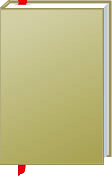

 |

|

The average rating for Women and gender based on 2 reviews is 5 stars.
Review # 1 was written on 2011-08-04 00:00:00 Luis Vieyra Luis VieyraI totally love this book. The research is both deep and broad and it sure opened my heart and my mind. Intersectionality is the key to understand all beings and the themes of this textbook certainly reflect this. Amazingly it also helped to heal lots of wounds, because knowledge is power. Simply knowing what you are up to is already very empowering and very encouraging. After all life is a never ending challenge, we are all in it struggling, being able to connect with all others who have been through similar challenges are not only comforting but also transforming. |
Review # 2 was written on 2016-10-22 00:00:00 Frank Gavrilos Frank GavrilosA lucid, excellent, compelling and very complete introduction to the cultural constructions about women from a feminist perspective on psychology and sociology. It was written as a college textbook and makes for fascinating reading as the authors not only review relevant research but also critically analyze the gaps and biases in that research. It includes well chosen cartoon strips from Lynn JohnstonFor better or worse , Greg Howard's Sally Forth, Bill Watterson's Calvin and Hobbes and G. B. Trudeau's Doonesbury, magazine illustrations, testimonial quotes and poems to underline several key points humourously or poignantly. Even though I read the 1996 edition of this book twenty years after it was published, the book has aged well and is still very timely and eye-opening -unfortunately most of the problems encountered by women in the U.S. and in Latinamerica persist with very little change, as the U.S. presidential race between Hillary Clinton and Donald Trump clearly evidences. The 1996 edition is very US centered, very infrequently straying across its borders to pick up a statistic or an example from Canada, Mexico, Britain or Scandinavia. There is very little on women and religion:some scattered commentaries on women within Christian tradition, a throwaway, almost stereotypical remark on Jewish mothers, nothing on Islam. The authors criticize the fact that most studies, at least in the US up to 1996 had focused on white, middle-class, educated women and seem to do a thorough job in reporting research outside these narrow confines -it is to be hoped that in the twenty years since the 1996 edition, this gap has somewhat narrowed. On the plus side, I found most chapters enlightening and insightful, and some chapters, like chapter 14, Violence against Women, particularly powerful, from the two poems heading the chapters onwards, one by Ntozake Shange (1978) and the other, quoted below, by Marge Piercy (1976):There is no difference between being raped and being pushed down a flight of cement steps except that wounds also bleed inside. There is no difference between being raped and being run over by a truck except that afterward men ask if you enjoyed it. There is no difference between being raped and being bitten on the ankle by a rattlesnake except that people ask if your skirt was short and why were you out alone anyway. There is no difference between being raped and going head first through a windshield except that afterward you are afraid not of cars but of half the human race.The authors' Afterword on the effectiveness of the book in the setting of a college course is well worth mentioning:For the first three chapters [Introduction to a feminist psychology of women, Approaches to understanding girls and women, The meanings of sex difference: sex, gender and cognitive abilities], students perceive the psychology of women and gender as just another college course. They are skeptical about the amount of sexism described and argue with their instructors a lot. Chapter 4 -images of women- gets them involved and angry. They become progressively angrier and more depressed as they read chapters 5 through 8 [ Doing gender: sex, status and power, Biological aspects of sex and gender, Becoming gendered: childhood, Becoming a woman: puberty and adolescence]. Chapter 9 -on sex, love, and romance- is another turning point. This chapter and the following four [Commitments: women and long-term relationships, Mothering, Work and achievement, Midlife and beyond ] produce positive feelings and motivate students to examine th structures around them as they look to the future or reexamine their pasts.Chapters 14 [Violence against women] and 15 [Gender and psychological disorders] induce both positive and negative emotions. Many students "come out" as survivors of various forms of violence and psychological disorders. They may find strong bonds with others who are also resisting the gendering process.The sensitivity, empathy, critical sense and pragmatic optimism brought by both authors to this outstanding textbook should do much to dispel the reader's possible prejudices and blanket condemnations against women studies or feminist perpectives and show why the feminist perspective is so focused on the use and abuse of socially condoned power as a key factor in the construction of gender for women. |
CAN'T FIND WHAT YOU'RE LOOKING FOR? CLICK HERE!!!